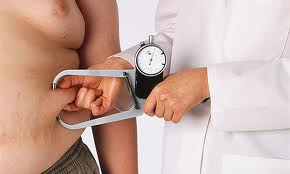A review article in the August issue of Neurosurgery, the official journal of the Congress of Neurological Surgeons, suggests that scientific advances in understanding the “addiction circuitry” of the brain could effectively treat obesity using deep brain stimulation (DBS).
DBS is currently a successful treatment for Parkinson’s disease, and could potentially be a new way to treat obesity by electrical brain stimulation targeting the “dysregulated reward circuitry”, Dr. Alexander Taghva of Ohio State Univeristy and University of Southern California and colleagues revealed.
New Understanding of ‘Reward ‘Circuitry’
These days there are more and more people suffering with the severe health problem of obesity, however it is still extremely difficult to treat. Ironically, patients usually gain weight right after they finish treatment, even though many approaches promote weight loss. Several products have been taken off the market because of serious adverse effects, while most drugs have been unsuccessful.
Although bariatric surgery has proven effective in a number of obese cases, it still has a significant failure rate with people experiencing bad side effects.
By controlling appetite and body weight, drug treatments for obesity have targeted the self-regulating (homeostatic) mechanism. The “feeding center” in the hypothalamus is involved in this mechanism by producing hormones like leptin and insulin that affect feeding behavior.
DBS was previously tested to treat obesity by targeting the hypothalamus, however just as with drugs targeting the homeostatic mechanisms, success was not very common.
New Approaches Using DBS to Treat Obesity
A different mechanism, the “reward circuitry” of the brain, has been examined in recent research. Obesity is associated with a “relative imbalance” of the reward circuitry, according to scientists.
Research has revealed that obese people, specifically those with addictive behaviors, are more impulsive and less capable of delaying gratification. The homeostatic mechanism is deeply interconnected with the reward circuitry.
All of these studies together could potentially lead to new ways to use DBS as a treatment of obesity. A tiny electrode is surgically placed in a certain location in the brain by DBS. In order to stimulate that area, a mild electrical current is sent to interrupt abnormal brain activity. Parkinson’s disease and other movement disorders are effectively treated by deep brain stimulation.
Authors suggest that obese patients might be able to stimulate the areas involved in dysregulated reward circuitry in order to “turn off” their abnormal feeding behaviors, just like Parkinson’s disease patients stimulate areas of the brain responsible for abnormal movement to help “turn off” their tremors. The experts outlined evidence showing a variety of brain areas involved in the brain’s reward circuitry, specifically the “frontostriatal circuitry”, that could be potential targets for DBS.
DBS used for other reasons, such as serious cases of obsessive-compulsive disorder, has had unpredicted beneficial effects on addictive behaviors like overeating and smoking, according to previous research.
Dr. Taghva and colleagues believe their review will lead to further observations on ways to effectively treat obese people by using DBS, perhaps in combination with therapies focusing on the homeostatic mechanism.
